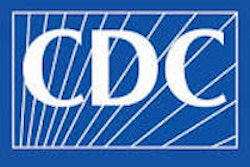
Rates of cancer incidence and mortality continue to fall in the U.S., according to a new report by the U.S. National Cancer Institute (NCI). Deaths from cancer dropped 1.8% annually in men and 1.4% annually in women from 2002 to 2011, the report disclosed.
With respect to cancer incidence, rates fell 1.2% annually among men from 2002 to 2011 and 0.3% annually among women from 2002 to 2011. The decline accelerated from 2007 to 2011 among men, with incidence falling 2.2% annually, but remained at an average annual decline of 0.3% among women.
Among men, mortality rates dropped the most for prostate cancer, falling 3.3% from 2002 to 2011, according to the report. Among women, rates of non-Hodgkin's lymphoma fell the most, dropping 3.1% during the same period. Meanwhile, cancer mortality rates for liver and inflammatory bowel disease rose 2.6% in men and 1.9% in women during the reporting period.
Mortality rates for other select cancers are as follows:
| Average annual cancer mortality rate change by disease type, 2002-2011 | |||
| Cancer type | Men | Cancer type | Women |
| Prostate | -3.3% | Non-Hodgkin's lymphoma | -3.1% |
| Stomach | -3.1% | Colon and rectum | -2.9% |
| Colon and rectum | -3.0% | Stomach | -2.7% |
| Lung and bronchus | -2.6% | Ovary | -2.0% |
| Larynx | -2.5% | Oral cavity | -2.0% |
| Non-Hodgkin's lymphoma | -2.3% | Breast | -1.9% |
| All sites | -1.8% | Myeloma | -1.6% |
| Myeloma | -1.1% | All sites | -1.4% |
For breast cancer, incidence rates stabilized between 2002 and 2011 after several decades of growth due to early detection from mammography and changes in reproductive factors, as well as changes in obesity rates and the use of premenopausal hormone replacement therapy (HRT), the report noted. The stabilization was probably driven by an abrupt decline in incidence between 2002 and 2003 related to reductions in the use of menopausal HRT.
Other highlights include the following:
- A decline in colorectal cancer may be due to the elimination of precancerous lesions due to colonoscopy screening.
- Declines in prostate cancer may be due to more conservative recommendations for the use of prostate-specific antigen (PSA) screening.
- Incidence of some cancers such as thyroid and melanoma have increased, possibly due to improved detection, better screening, and better reporting, or from higher hepatitis C rates from IV drug use for liver cancer or higher ultraviolet light exposure for melanoma. However, the report noted that survival is increasing for melanoma and thyroid cancer, which could be a sign of overdiagnosis.



















